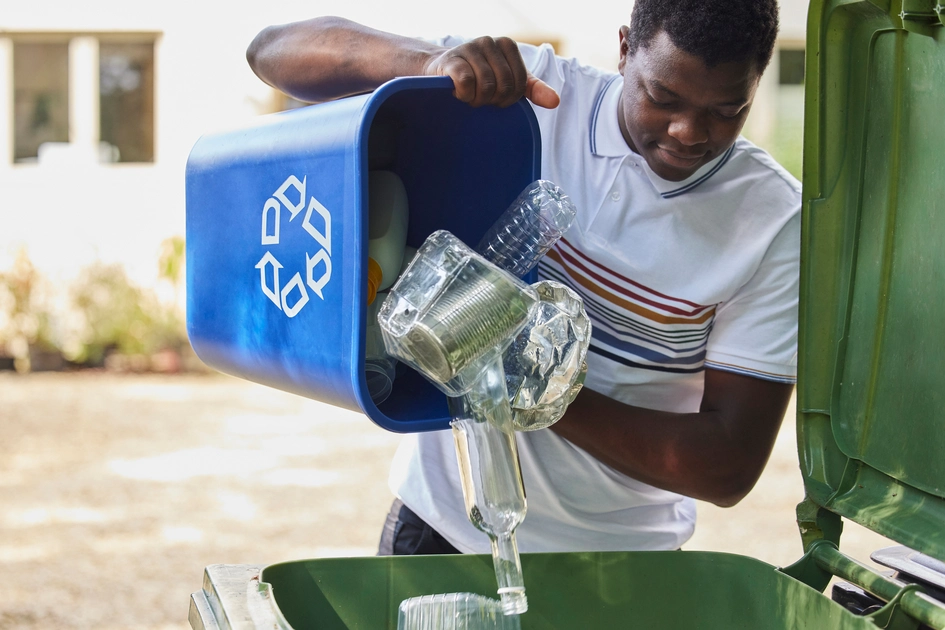Recycling and Climate Change ♻️🌎
Recycling helps mitigate climate change, but it’s not nearly enough.
Should you recycle? Absolutely! Will it stop climate change? Absolutely not. A lot of people think recycling is one of the top ways to fight climate change, but the truth is more complicated. Recycling does help—it reduces waste and conserves resources—but it’s just one piece of the puzzle. Let’s talk about what it actually does and doesn’t help with.
The Impact of Recycling on Climate Change
Recycling is good for the planet, and here’s why: it reduces the amount of waste piling up in landfills, where trash releases methane, a powerful greenhouse gas. Recycling materials like paper, metal, and plastic also conserves resources. The more we recycle, the less mining, drilling, and logging we need to do. That saves energy and prevents additional pollution.
For example, recycling aluminum cans uses 95% less energy than making new ones from raw materials. But while recycling helps reduce emissions, it’s not the answer to climate change that we hope for.
Recycling Has Limits
Even though recycling conserves resources, it’s not a magic fix for climate change. Why? Because the process itself takes energy. Recycling metal, glass, and plastic involves transporting, sorting, and reprocessing materials—steps that often rely on dirty fossil fuels. And, in some cases, it may even use MORE fossil fuels—as it has been found with recycling paper.
Generally, compared to making new products from scratch, recycling is still a better option. But here’s the catch—it can delay resource depletion, but it doesn’t change the demand for limited resources. It doesn’t tackle the root causes of overproduction or wasteful resource extraction and is only focused on what we do with materials after we’ve already used them, not on reducing the amount we use in the first place.
Recycling also doesn’t touch emissions from the biggest sources of carbon pollution—energy production and transportation.
Finally, recycling isn’t equally accessible everywhere. Wealthier nations often export their waste to other countries, with some being sent to developing countries that don’t have the resources to process it properly. This can lead to pollution and health risks for local communities, putting an unfair burden on developing nations.
The Problem with Plastic Recycling
Plastic recycling, in particular, has serious challenges. The reality is that most plastic isn’t recycled at all—it ends up in landfills, gets burned, or pollutes the environment. In 2021, of the 40 million tons of plastic waste generated in the country, only 5% to 6% was recycled. Many types of plastic also can’t be recycled due to contamination or poor material quality. Lack of infrastructure means entire batches of recyclable materials might be rejected if they’re mixed with non-recyclables.
This creates a vicious cycle—instead of helping, poorly managed plastic recycling efforts add to the waste problem and even increase carbon pollution.
This creates a vicious cycle—instead of helping, poorly managed plastic recycling efforts add to the waste problem and even increase carbon pollution. When plastic waste is incinerated, it releases greenhouse gases and toxic chemicals, further harming the environment and public health. Even when plastic does make it to a recycling facility, the process itself is inefficient and energy-intensive, requiring significant resources while yielding minimal results. Additionally, the presence of multiple types of plastic—many of which require different processing methods—complicates the system, leading to low success rates and higher costs.
Compounding the issue, the growing production of single-use plastics continues to outpace recycling efforts, making it nearly impossible to keep up. Companies rely on virgin plastic because it’s often cheaper and easier to produce than recycled alternatives. Meanwhile, consumers may assume that tossing plastic into the blue bin guarantees it will be reused, but in reality, much of it is discarded or shipped overseas, where it often ends up in unmanaged waste streams. Without systemic change, plastic recycling alone cannot solve the broader waste crisis or mitigate its environmental impacts.
Recycling Alone Can’t Solve Global Warming
Here’s the bottom line: recycling is a step in the right direction, but it’s not nearly enough to make the kind of progress we need on climate change. To meet our climate goals, we have to focus on bigger solutions:
✅ Charging polluters a fee for carbon pollution that is overheating the planet
✅ Upgrading our homes, communities and economy to run on clean energy sources
✅ Protecting our forests from the impacts of climate change and wildfires
Recycling doesn’t address the growing demand for resources. Even if we recycle everything we can, it doesn’t stop the need to extract more finite materials or prevent the waste that comes from overproduction.
What can I do to help climate change beyond recycling?
There are lots of ways to protect your community and the planet. One thing you can do is talk about climate change with your friends and family and let them know you’re worried about it. Most people who are worried about climate change don’t talk very much about it which makes the problem seem less urgent than it really is.
To work with other people in your community on solutions to climate change, join CCL. You’ll learn more about climate solutions, and meet with elected officials to seek their assistance in solving the issue.
Here’s what you can do right now:
✅ Join us to advocate for policy solutions that will stop the pollution that’s overheating the planet



